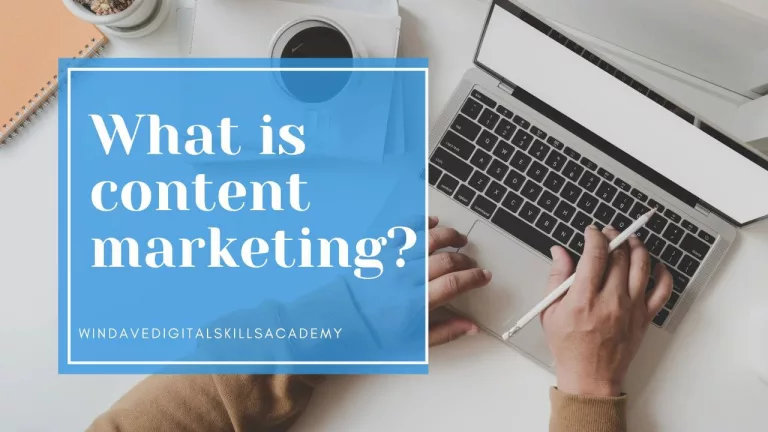What is Copywriting: How to Become a Copywriter?
You want to learn about words that sells or you want to become a wordsmith, this post if for you!
What is copywriting?
Who is a copywriter and what do they do?
Skills required in copywriting
Types of copywriting
Copywriting tools
Tips to get started as a Copywriter
How to measure success rate of a copy
Is copywriting same as content writing?
How important is a CTA
What is Copywriting?
Table of Contents
Copywriting is using written words to let people take a desired action. That is helping people with a problem get their results, we all have a need. It can be any of the pain points; finances, health, comfort, pleasure, curiosity, time, etc.
Words have power. The right words can stir emotions, spark action, and eventually drive results. This is copywriting, where you craft persuasive messages that connect with audiences and influence their decisions. Whether it’s a website landing page, a product description, a captivating ad, a social media marketing, a script, or an email sequence, compelling copywriting forms the backbone of successful marketing effort.
Copywriting is a crucial part in every digital marketing strategy and agency. It helps make your target audience take an action and raise their interest in your offer. Digital marketing strategies are ways to boost company/brand/business awareness and the end point is an action which is where the copywriting comes in place.
Who is a Copywriter and What do they do?
A copywriter is one who is skillful with his/her words. They know how to trigger a person in taking an action either positive or negative. But, they are mostly positive and legally too because it’s always a for brand marketing purpose.
A copywriter understands the product/service value and the interest of its audience. Let’s use a “Tesla” for example; its copywriter knows their audiences are people who love luxury, ambience, and take pride in their asset. He/she will craft out its written words to suit the audience desire and use relevant keywords and competitors review to persuade them.
A copywriter is valuable and esteemed because they drive in sales to a brand with great and engaging messaging to its target audience. It also increases lead generation and conversion rates. It’s a prominent career path to want to do and bring out the creativity in you.
Skills required in copywriting
Every digital marketing skill is essential in the copywriting niche as well. Let’s name a few;
- Storytelling: A copywriter should know how to tell a story that captivates a target audience and quite engaging as well in way that they would not feel “sold to” while taking an action. He/she should learn how to create clear and persuasive and of course, almost everyone tells a story.
- Research: every digital career needs this skill and so does copywriting. You need to learn how to research topics, human psychology, reviews, brand product or service history/value, etc. A good research skill is needed in total, you can learn it too.
- Creativity: Building something new or astonishing from an existing brand, it can be slogan, product description, sales offer, etc. A copywriter should be creative and be a good thinker, as well as an innovator.
- Knowledge of SEO: check out common SEO mistakes to watch out for. It’s important for a copywriter to understand how SEO works in order to use keywords that are particular to their marketing.
- Basics: these basics can be writing, different types of copywriting, good grammar, attention-to-details, communication, critical thinking, marketing trends, etc.
Types of Copywriting
There are numerous kinds of copywriting skills in conjunction with digital marketing.
This includes:
Advertising:
It relates to every form of copywriting and it’s for target audience to take an action. If running an advertisement for a business, ensure to deliver benefits over feature and that way, your copy will convert.
Content marketing:
Copywriters help in creating informative content in a persuasive way to build relationships with its target audience.
Sales letter:
It could be offline or online. It revolves around product/service descriptions, white papers, landing pages, etc. A copywriter help write a business valuable offer to its target audience and drive conversion.
Email marketing:
Email is one method in staying connected with a brand’s audience. An email copywriter helps create persuasive copies for its brand’s offer starting from headline, body text, conclusion, and attractive call-to-action.
Web copies:
Website is the powerful tool of every business, copywriting is essential for its value delivery.
Social media:
Copywriting for social media can be found in brand organic and paid advertisement. It should involve stories as people that engage post here do not want to feel sold too. So, every professional copywriter knows that he creating a social media copy, it has to be exciting and social in reference to the purpose of the social media channel.
Copywriting Tools for copywriters
Different tools to aid in writing copies and help a copywriter create compelling words for each type of copywriting he/she is doing. Here are some common tools used;
- Grammarly: This copywriting tool help a user check his/her grammar and spelling and recommend words to be used.
- SEMrush: this is best for SEO research. It’s an AI tool that help marketers in general to provide keyword, analysis, metrics, content ranking, etc.
- copy.ai: this tool help generate sales copy, product description, advertisements, etc. to match your copy tone. It has a free version and pro version, check it out
- Chatgpt: this was launched in late 2022 and gained popularity over the years. It is an AI tool that helps with content ideas and body content for any niche you are working on. You just need to type in your prompt and it gives your desired result.
- Wordtune: it’s among the best AI copywriting tools. It helps copywriters to create engaging copy for their sales copy description, social media, web, blog, documentation, etc. It has a free and pro session as well and limited words for prompt.
These tools help ease your writing and more.
- Hone Your Writing Skills:
Practice makes progress. Write consistently, read deeply, and analyze effective copywriting examples. Take online courses, join writing communities, and seek feedback to refine your copies.
- Choose Your Niche:
From website copy to email marketing, etc. Copywriting offers diverse route. Explore different niches, identify your strengths, and specialize in an area that excites you. It’s good to have an idea of all types, but stay specific and grow.
- Build Your Portfolio:
Showcase your skills. Create spec work for dream brands, volunteer or intern for projects, or start a personal blog where you experiment with different copywriting styles. Package these experiences in a skilful way and updated.
- Network and Connect:
An adage says “no one does it alone” and that’s why any brand needs this skill too. Build relationships with industry professionals, attend events, and participate in online communities. Expand your network, learn from others, and be part of potential opportunities.
- Start Freelancing or Find an Agency:
Want to monetize your skills? Explore freelance platforms such as fiverr, etc. reach out to potential clients through cold pitching, or apply for copywriting positions at agencies. Persistence and a strong portfolio are needed.
- Stay Updated:
A copywriter needs to stay updated to market trends, helpful tools, business/brand news they are working with, and have a versatile knowledge.
- A/B Testing:
Try different method, share your copy to friends or mentors to help critique and give feedback. Keep tweaking and accept feedbacks.
- Ask questions:
Ask the target audience their pain point in desiring a product/service. Ask experts their approach to a particular campaign; seek past success sales copy and measure.
Principles in Copywriting
Here’s a breakdown of the core principles:
- Know Your Audience: It’s not about you, it’s about them. Before creating a single word, immerse yourself in your target audience. Understand their desires, pain points, and motivations. Speak their language, resonate with their experiences, and offer solutions they crave.
- The AIDA Formula: This classic framework guides your copy’s structure: Attention, Interest, Desire, and Action. Grab attention with a compelling headline, stimulate interest with relatable benefits, ignite desire by highlighting product/service value, and finally, prompt action with a clear call to action.
- Benefits over Features: Don’t just list features; translate them into benefits that matter to your audience. How will your product/service improve their lives? Focus on emotional impact and solve their problems through your offering.
- Power of Storytelling: Humans are wired for stories. I highlighted it as a compulsory skill to learn because it’s important. Put together narratives into your copy to connect on an emotional level. Showcase real-life examples, paint vivid pictures with words, and leave a lasting impression.
- Clarity and Conciseness: Keep it simple and clear. Avoid jargon, convoluted sentences, and unnecessary fluff. Use strong verbs, active voice, and short, punchy sentences. Every word should count and contribute to your message. Make it short and simple when necessary.
- Emotional Triggers: Make use of human emotions like trust, urgency, scarcity, and exclusivity. Highlight what your audience might fear losing or the limited-time opportunities they shouldn’t miss. Triggering emotions motivates taking an action.
- Call to Action (CTA): Don’t leave your audience guessing. Tell them what you want them to do next, whether it’s subscribing, buying, clicking, or downloading. Make your CTA clear, specific, and compelling.
How to measure success rate of a copy
There are lots of ways to measure success rate of your copywriting. After doing all duly observant in creating your copy and its launched, here are few things to observe and measure the copy;
Conversion rate
Click-through rate
Bounce rate
Engagement rate
Leads
Open rate
Reply rate
Shares
All these depend on the goal of your copywriting, ensure to pay rapid attention to it and monitor.
Is copywriting same as content writing?
Copywriting and Content writing are all part of writing techniques in digital marketing, and they have clear difference.
Content writing is to inform, educate, or entertain its audience. Its endpoint is to keep reader engaged and come for more or just for the moment.
On the other hand;
Copywriting educates its user too, but makes the audience take an action. It’s all about a promotional type of writing. It always ends with a call-to-action.
How important is a CTA
Call-To-Action is important in every sales copy. There are different types of CTA that should be placed in every copy depending on what the copywriter wants from its target audience.
Check out some CTA to include in your copywriting article.
Conclusion
The path to becoming a successful copywriter is a continuous learning process. Stay curious, experiment, embrace feedback, and evolve your skills. With dedication and a passion for words, you can become the wordsmith who crafts messages that captivate, convert, and ultimately, help businesses thrive. Remember copywriting is the heartbeat of effective communication in the business world.
Bonus Tip: Immerse yourself with advertising slogans, successful marketing campaigns, and powerful storytelling. Analyze what makes them work and apply those insights to your own writing.




